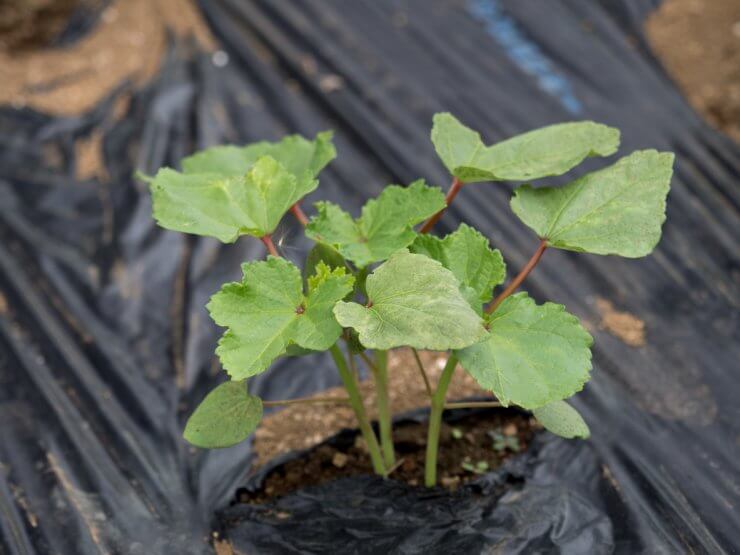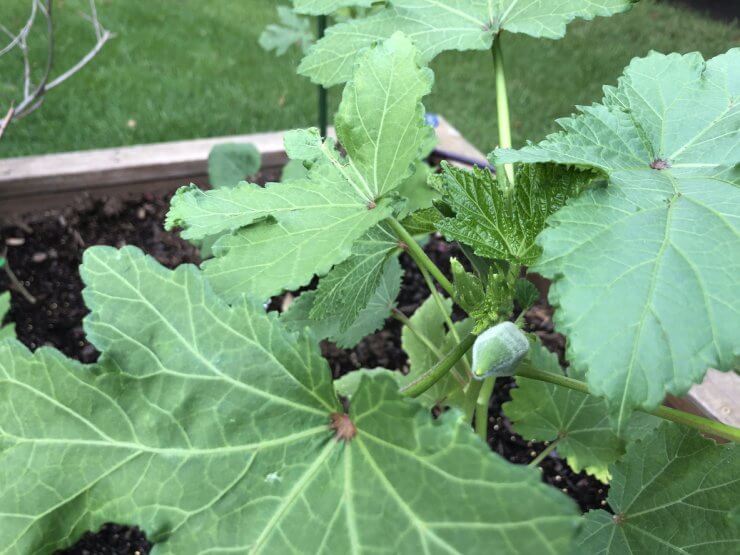
Okra growing in a field
You can grow your okra anywhere you like—as long as it gets lots of sun. Okra hates shade. Find a spot with maximum sun exposure—at least six hours of direct sun a day.
Okra likes well-drained soil rich with organic matter; your soil pH should be in the range of 5.8 to 6.8. If you’re not sure about your soil’s pH—get it tested. It’s best to get your soil tested professionally; the home kits can be inaccurate. If you don’t test your soil (but we really, really hope you will), use a complete balanced fertilizer—but don’t overdo it. Too much nitrogen can trigger prolific plant growth but may delay or stunt flowering and fruiting—and you’re growing okra for a reason, right?
Okra will grow wherever the soil is warm, the days are sunny, and the heat is high. The variety you grow will depend on the amount of growing space you have. But you have plenty of options, so whether your garden space is on a balcony, a deck, or out in the back 40, there’s an okra for you.
If you’re going the container route, make sure you use fresh, new, premium potting mix for your new plants—and make sure the container has adequate drainage. And, as with most plants, take it easy on the water. Healthy soil will help you grow healthy plants and get you to a satisfying harvest.
Raised beds and open ground

Okra in raised bed
Raised garden beds can be a good choice for growing okra, giving you easy access to the plants for weeding, watering, and harvesting without as much bending. You also get a little more control over the composition of your soil, since it’s contained to the bed.
Keep in mind that good drainage is an important part of keeping your okra plants healthy. Make drainage part of your planning process when you’re setting up your raised bed.
You can build a raised bed yourself or get a kit with sides the height that you prefer. Then you can just fill your raised bed with packaged garden soil, eliminating the risk of contaminants, pests, and diseases that can come with simply digging up soil from your yard.
Watering, weeding, and even harvesting are much easier with raised beds, with items closer to your reach and contained in a space that is more manageable than growing in open land. That means less weeding, which is itself easier because you don’t have to bend down as far to get to the invaders!
Okra is fairly drought-tolerant, but if the weather turns especially dry, you’ll want to give your plants a good soaking about once a week. This is especially important when your plant is developing flowers and pods. And remember that raised beds and containers don’t retain as much moisture as open land.
Okra grows just fine in open ground, too. Just make sure your soil is properly prepared to welcome your seeds or seedlings, and make sure the area you choose gets lots of direct sun. Your plant spacing will depend in part on the variety you choose. But after the initial growth period, the okra plants should create enough shade of their own to deter weeds. Up to that point, though, you’ll want to be vigilant and protect your young plants.
How do you grow your okra—in open land, in raised beds, or in containers? Why do you prefer your method? Please tell us your tips and tricks for creating an awesome okra patch.


 Previous
Previous

